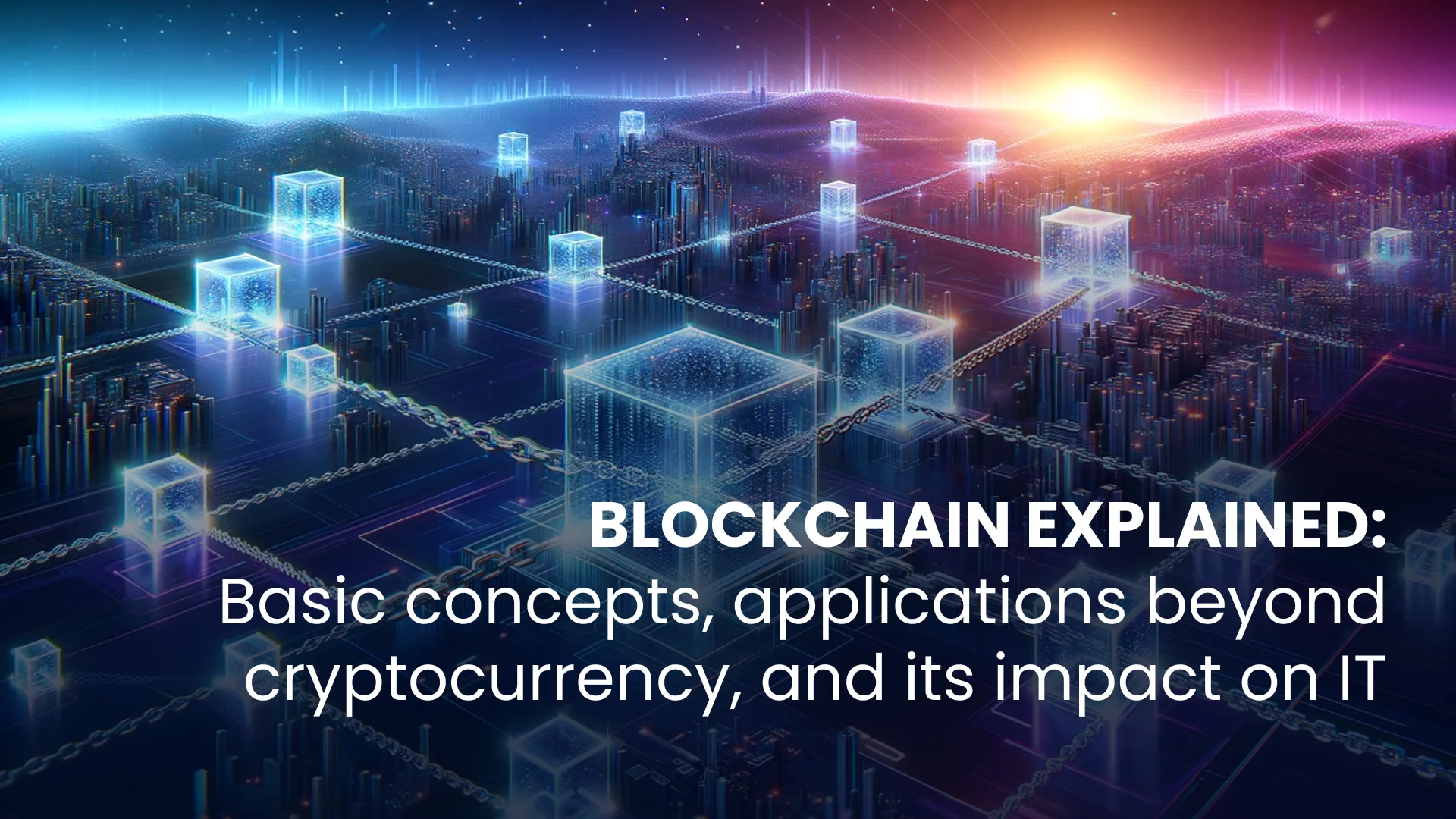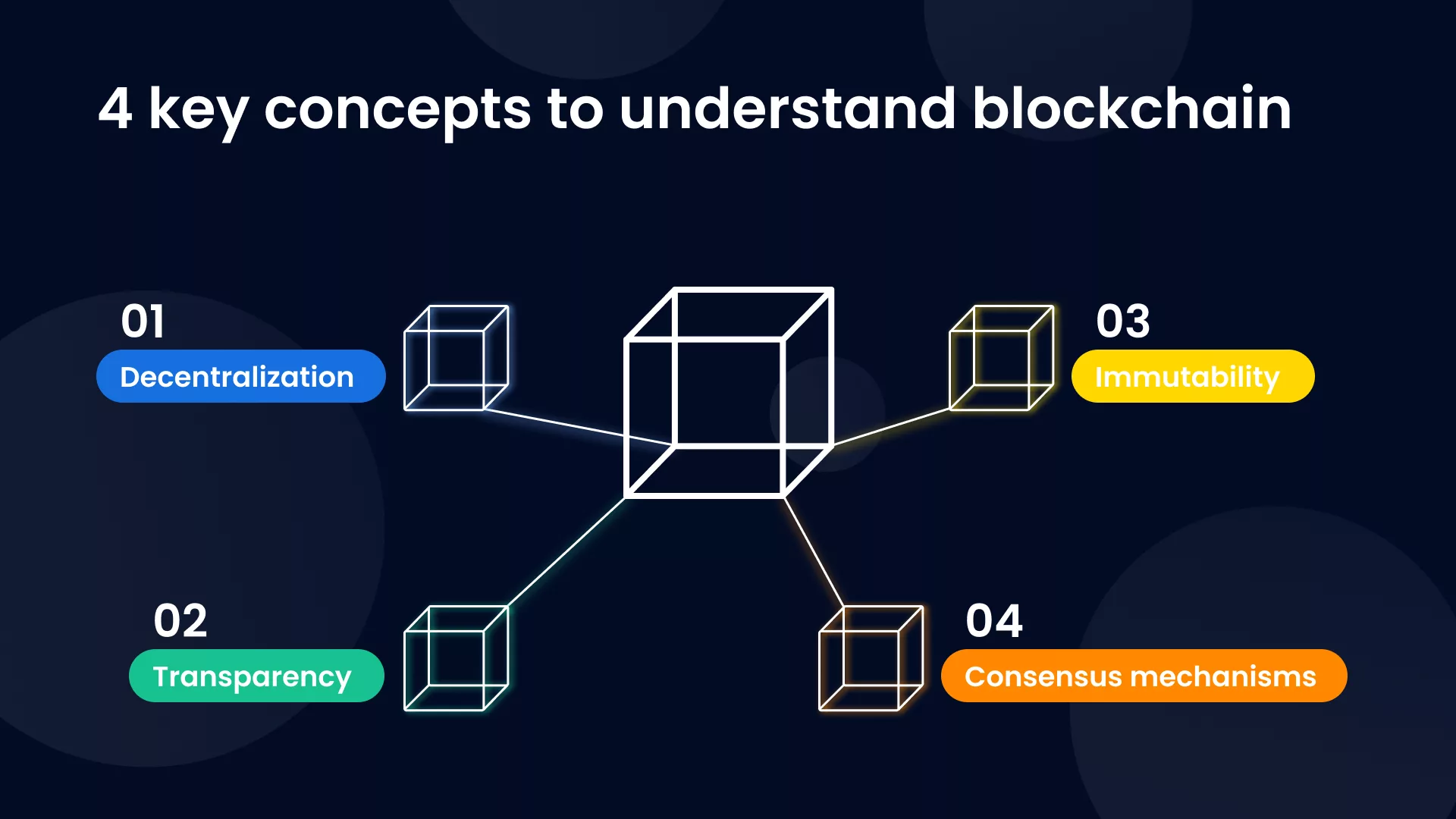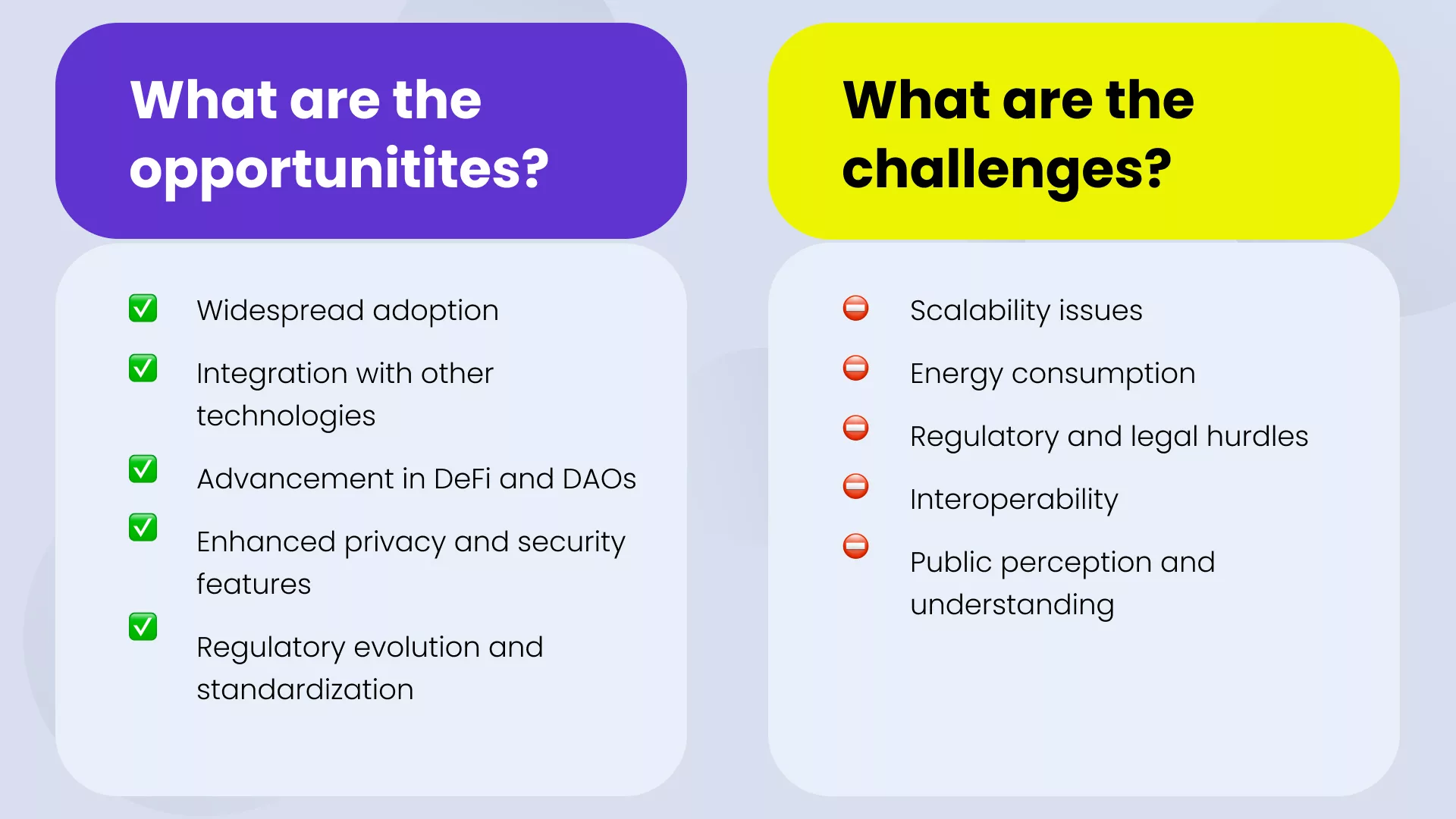
Blockchain technology is a decentralized digital ledger that records transactions across many computers so that the registered transactions cannot be altered retroactively. This technology is the backbone of cryptocurrencies, but its applications extend far beyond just serving as the infrastructure for digital currencies.
Content:
- Key concepts of blockchain
- Applications beyond cryptocurrency
- How does blockchain impact the IT sphere?
- What are the possible future and challenges of blockchain technology?
- Summing up
Below is a breakdown of the basic concepts, applications beyond cryptocurrency, and its impact on the IT industry.
Key concepts of blockchain

Decentralization. Unlike traditional centralized systems, blockchain operates on a distributed network of computers (nodes), eliminating a single point of control and failure.
Transparency. All transactions on the blockchain are visible to participants, ensuring transparency while maintaining privacy through cryptographic techniques.
Immutability. Once a transaction is recorded on the blockchain, it cannot be altered or deleted, guaranteeing the integrity of the transaction history.
Consensus mechanisms. Blockchain employs various consensus methods (e.g., Proof of Work, Proof of Stake) to validate transactions, ensuring all participants agree on the ledger’s state without needing a trusted third party.
Applications beyond cryptocurrency
Blockchain’s potential extends far beyond cryptocurrencies like Bitcoin and Ethereum. Where else can it become a game changer?
- In supply chain management. Blockchain improves transparency and traceability in supply chains, enabling more efficient tracking of goods and authentication of product authenticity.
- In smart contracts. Self-executing contracts with the terms directly written into code, automating and enforcing agreements without intermediaries, applicable in finance, real estate, and legal processes.
- In healthcare. Secure and immutable records can enhance patient data management, ensuring privacy and enabling more efficient and accurate treatment and research.
- In identity verification. Blockchain can offer a secure and unforgeable means of managing digital identities, applicable in voting systems, online authentication, and more.
- In decentralized finance. Beyond traditional cryptocurrencies, blockchain supports the development of DeFi platforms, offering financial services without central financial intermediaries.
How does blockchain impact the IT sphere?
Blockchain introduces a new data management, security, and collaboration paradigm, massively affecting the whole IT sphere. Here are the trends we see in 2024:
1. Enhanced security and trust
Blockchain enhances data security and integrity through its decentralized nature and cryptographic hash functions. It provides a tamper-proof system where modifications to the data are virtually impossible without consensus, significantly reducing the risk of fraud and cyber-attacks. This has led IT sectors to adopt blockchain for secure transactions, data management, and identity verification, fostering trust in digital interactions.
2. Shift in skill sets and job opportunities
The rise of blockchain technology has created a demand for professionals with specialized skills in blockchain development, smart contract programming, and blockchain system design. This demand extends beyond technical roles to include legal, regulatory, and business strategy positions focused on blockchain applications. IT professionals are now seeking education and certification in blockchain technology to meet the growing need for expertise in this field.
3. Decentralization of applications and services
Blockchain enables the development of decentralized applications that operate on a peer-to-peer network rather than being controlled by a single entity. This shift challenges traditional centralized IT architectures and business models, prompting companies to explore decentralized solutions for enhanced transparency, security, and efficiency.
4. Innovation in infrastructure
The deployment and management of blockchain applications require new types of IT infrastructure, including distributed computing resources, specialized storage solutions, and enhanced network capabilities. This has led to innovation in cloud services, edge computing, and other IT infrastructure technologies to support the scalability, performance, and security needs of blockchain systems.
5. Regulatory and compliance challenges
As blockchain technology becomes more prevalent, IT departments must navigate an evolving regulatory landscape. Compliance with data protection regulations, understanding the legal implications of smart contracts, and managing cross-border data flows in a decentralized network are complex challenges that IT professionals must address.
6. Emergence of new business models
Blockchain technology supports new business models and revenue streams, such as tokenization, DeFi, and blockchain-as-a-service offerings. IT companies are exploring these models to provide innovative services to their customers, requiring shifts in business strategy, service delivery, and customer support.
7. Data management and interoperability
Blockchain offers new ways to manage and share data across organizations and systems securely. This potential for enhanced interoperability and data exchange is driving IT initiatives to leverage blockchain for supply chain management, healthcare records, and cross-industry data platforms.
What are the possible future and challenges of blockchain technology?
The future of blockchain technology is promising, yet it faces challenges that need to be addressed. Here’s a look at the prospective future developments and the hurdles blockchain technology faces.

Possible future of blockchain technology
- Widespread adoption. Beyond finance and cryptocurrencies, blockchain is poised to revolutionize supply chain management, healthcare, real estate, and even government operations by providing transparent, secure, and efficient ways to record transactions and manage data.
- Integration with other technologies. Blockchain is expected to increasingly integrate with other emerging technologies, such as IoT and AI, creating more secure and efficient systems for data exchange and automation.
- Advancement in DeFi and DAOs. The finance sector may see a shift towards more decentralized platforms, reducing reliance on traditional financial institutions and promoting financial inclusion. DAOs could redefine organizational structures, with blockchain enabling truly decentralized and democratic decision-making processes.
- Enhanced privacy and security features. Ongoing developments in blockchain technology will likely produce more sophisticated privacy-preserving technologies, enabling transactions and data management with enhanced security and anonymity.
- Regulatory evolution and standardization. As blockchain becomes more mainstream, regulatory frameworks worldwide will evolve to better accommodate and facilitate its growth, including standards for interoperability, security, and privacy.
Challenges facing blockchain technology
- Scalability issues. One of the major challenges blockchain faces is scalability. Many blockchain networks struggle to process transactions at scale, which is crucial for widespread adoption.
- Energy consumption. Particularly for blockchains that use PoW consensus mechanisms, the energy consumption is significant, raising environmental concerns. There is a growing push towards more energy-efficient consensus mechanisms like PoS.
- Regulatory and legal hurdles. The decentralized nature of blockchain poses regulatory challenges, including issues related to compliance with existing financial regulations, data privacy laws, and cross-border transactions.
- Interoperability. As more blockchain networks emerge, the need for interoperability between different blockchains becomes critical to enable seamless exchange of information and value.
- Public perception and understanding. Misunderstandings and the complex nature of blockchain technology can hinder its adoption. Clearer communication and educational efforts are needed to improve public perception and understanding.
Summing up
While blockchain technology holds transformative potential for numerous sectors, realizing this potential depends on overcoming technical, regulatory, and societal challenges. The future will likely see a combination of technological advancements, regulatory adjustments, and broader cultural shifts as blockchain technology matures and becomes more integrated into everyday business and society.


